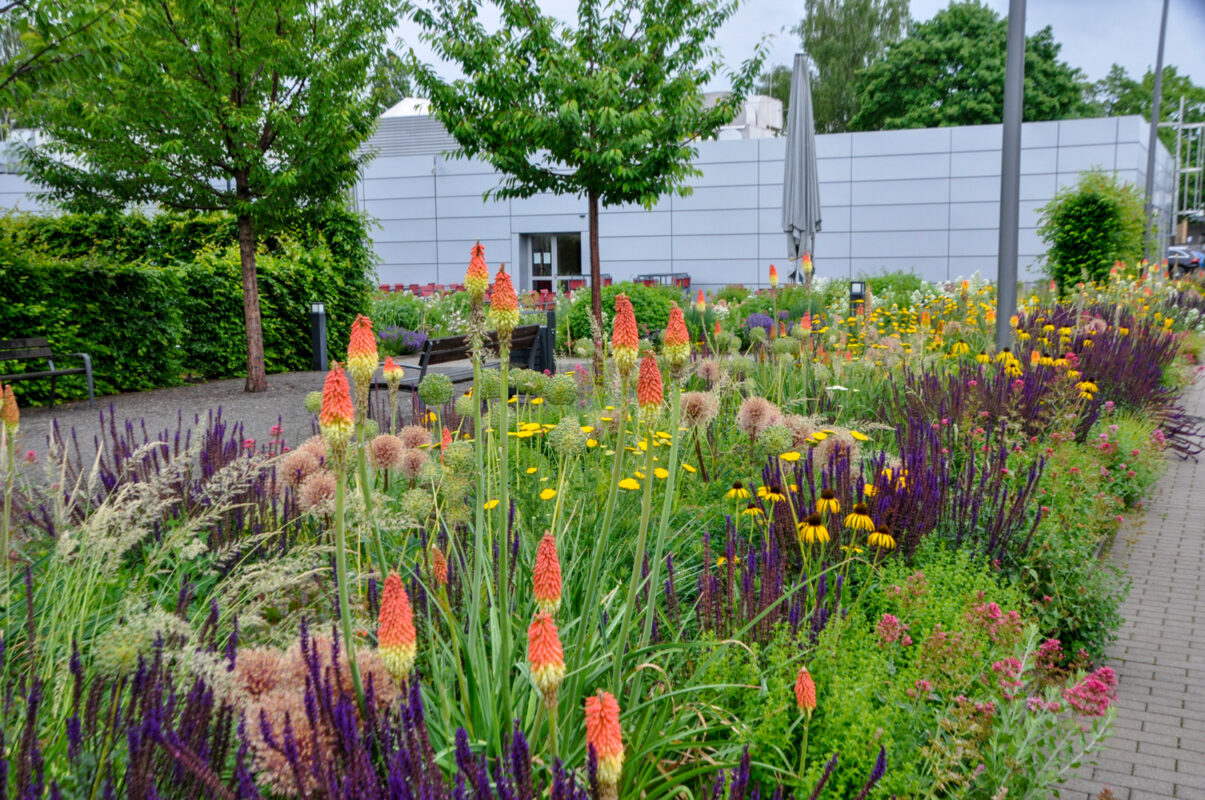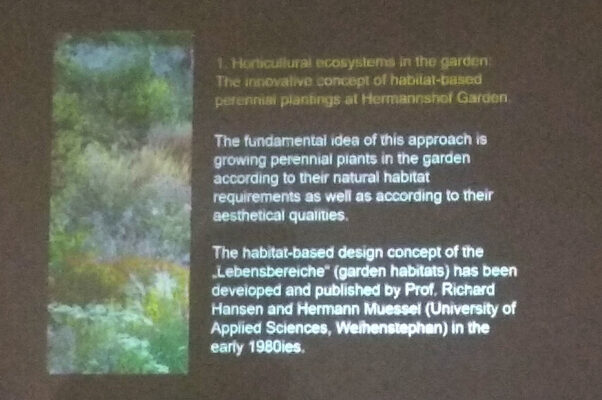The design of the garden and the landscape: The Master’s indications
Cassian Schmidt’s Lectio Magistralis was held on 8 September in upper Bergamo, explaining the intervention in Piazza Vecchia and the philosophy from which this intervention starts.
Read here the article on “The Masters of the Landscape” 2022
On the occasion of the Landscape Festival, the Landscape Architect Cassian Schmidt, who is considered a leader in the “New German Style” he has been working on for twenty years, spoke during the event in a meeting to explain “His research at Hermannshof [che] focuses on natural plant communities […] as models for new sustainable plant combinations for the urban environment ” (from the interview with Anke Schmitz of 10 May 2021)
In fact, in Germany the well-known Landscape Architect is dealing with the communities of plants and the influence of these groups in the landscape, mainly studying the North American prairies and the steppes of Eastern Europe.
How are his studies revolutionizing garden and landscape design?
We will see this by deepening his lesson.
His dissertation started from the Adda riparian forest 20 km from Bergamo. He speaks of a mixed tree community, disordered yet in balance: figs, vines, willows, grasses, carex, mosquitoes.
This forest is not always frendly, but this is its strength, its added value.
We always start from the analysis of what exists and try to understand why it is in balance and is so well developed. By studying the essences and the relationships that each plant has with the one next to it, you discover which essences go or don’t get along: why it happens and how to exploit its potential even in an urbanized environment.
The purpose of these studies is to define the communities of plants that make it possible to design different habitats at the service of man.
Which plants will survive in the future?
The climate is changing fast and we need to be prepared for the changes, but we can also prevent the damage of the lack of plants in urbanized places.
The basics of garden and landscape design
Plants oxygenate the atmosphere, lower the temperature especially at night, retain moisture and improve aesthetics.
The garden, although fenced and private, is still an ecosystem that fits among the other surrounding ecosystems and as such should be thought of as part of the landscape.
Thinking about plants is useful for plants, but also and above all for man.
Cassian Schmidt’s studies are going in the direction of the garden without artificial irrigation: only natural irrigation.
Plant communities are dynamic events: plants change over time and therefore the maintenance that is dedicated to them also changes. In this sense, the evolution of maintenance must therefore go hand in hand with that of design.
Plants in communities form habitats that must be placed in the right situation to give the best of themselves. Essences are social beings and these social relationships must be studied and understood in order to be reproduced and respected.
What are the recognized ecosystems? For example the tropical forest, the humid grassland, the dry steppe, the Mediterranean scrub common in Italy tolerant to drought, the prairie, etc.
Flexibility in this approach is essential because not all years are dry, some are wetter and there are also destructive events. For this reason, investments by public administrations must be thought over the long term to address the dynamic processes of plants that are living beings and change over time.
Be patient for the screen photos – I couldn’t do better.
Some examples of urban regeneration and redevelopment of green spaces
To clarify the matter better, Maestro Cassian Schmidt presented examples of some works carried out by his wife on industrial and public areas such as parking lots with the qualification of green spaces designed as infrastructures for storing rainwater. This technology allows you to create areas below the greenery where excess water, after feeding the plants, is collected.
I realize that I have only introduced a series of very important studies that need to be deepened and put into practice by the whole world of landscaping, starting with professionals as well as public administrations.
THE INTERVENTION OF ANCI
The Vice President of ANCI Lombardia who intervened before the intervention of Arch. Schmidt did not hide the situation in which the municipalities find themselves, on the one hand having to invest in greenery with the planting of new trees, on the other hand in managing citizens who ask for the removal of trees near their homes for fear of collapses.
Lectio Magistralis by Cassian Schmidt: Final remarks
A lot, a lot of meat on the fire that must be managed with great skills, many trained professionals, foresight and wisdom.
If you want to learn more about this event, I also recommend reading the article “The Masters of the Landscape in Bergamo” in order to have a more complete vision of this Landscape Festival.
In the coming days, moreover, articles relating to other interesting meetings will be published: as young people say: stay tuned!!
Now on horseback! Work awaits us! Our new wonderful outdoor space is about to be born!
GOOD WORK and … if you have any questions please write to info@mondodelgiardino.com
Sources of the images: the example image of the greenery in a parking lot is taken from gardenzauber.com; the images of examples of greenery in an industrial space are taken from the site jaugstetter-landschaftsarchitektur.de; the images of the CSR pyramid are taken from researchegate.net, from leca-dev.github.io and from chegg.com;












